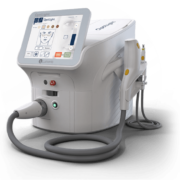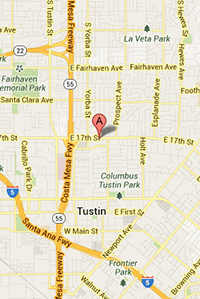OptiLight: New Dry Eye Treatment
What Is the OptiLight by Lumenis & How Can It Manage Your Dry Eye?
Dry eye disease is a widespread and common issue for up to 49 million Americans. This chronic condition can have a significant impact on your quality of life, causing a foreign body sensation in your eyes, pain, blurry vision, and dry or watery eyes. Untreated, it can even lead to further eye health complications.
Despite these constant detrimental effects on quality of life, many dry eye sufferers are not aware that they’re suffering from dry eye disease or that real treatments exist. Instead, they just live with the discomfort.
At Bender Eye, we take the time to understand your individual dry eye condition and offer comprehensive, personalized solutions to bring you the relief you need.
We’re proud to offer OptiLight by Lumenis to our patients, specially designed for dry eye management.
What Is OptiLight by Lumenis?
OptiLight by Lumenis is a light-based, non-invasive treatment done in the area below the eyes to manage dry eye. The first and only IPL FDA-approved for dry eye management.
The treatment is safe, gentle, and is backed by more than 20 clinical studies.
How Does It Work?
OptiLight uses precise pulses of light to reduce the inflammation that is typically associated with dry eye disease, improve tear break-up time, and increase meibomian gland functionality.
This application can significantly relieve dry eye indicators and has a multi-factorial effect, including:
- Increasing tear break-up time
- Reducing the amount of Demodex mites and bacteria living around your eyes
- Eliminating blood vessels that contribute to inflammation
- Improving meibomian gland functionality
What to Expect
Before Your Treatment
Before your OptiLight IPL treatment, you should avoid wearing any makeup or skin lotion. You should also protect your face with sunscreen to avoid any skin irritation prior to treatment.
When you arrive, you’ll fill out a skin type quiz so your doctor can set the OptiLight machine to the right setting to avoid burning or skin damage.
During Your Treatment
This treatment is fast and simple. During the treatment your doctor will apply a coupling gel on the treatment area and cover your eyes with shields.
As light is applied to the skin, you may experience a warm sensation. The treatment is gentle with minimum discomfort. The treatment itself will only take 10–15 minutes.
OptiLight is often followed by meibomian gland expression.
After Your Treatment
Post-treatment you should avoid direct sunlight on your face for 24-48 hours. You can expect some mild redness and a sense of tightness; however, you can also look forward to near-immediate results and a sensation that your skin is glowing.
Part of Your Custom Treatment Plan
A course of treatment typically includes 4 sessions spaced 2–4 weeks apart.
OptiLight by Lumenis is just one of the many treatment solutions we have available to help you overcome dry eye. From eye drops to eyelid hygiene, we’ll work with you to reveal the exact cause of your dry eye to treat it correctly and bring you relief.
Will the OptiLight by Lumenis Work for Me?
While OptiLight by Lumenis is an effective dry eye management solution, we want to make sure it’s right for you. We do not recommend this treatment if you:
- Suffer from aqueous deficiency dry eye (rather than evaporative dry eye or meibomian gland dysfunction)
- Have a history of keloid scarring
- Have severe scarring around your eyes
Ultimately, your doctor is the only person who can determine whether this option is right for you. During your next appointment, ask us if you are a good candidate for OptiLight by Lumenis.
You Don’t Have to Live With Dry Eye Anymore
Dry, irritated eyes can be managed with a new treatment that brings comfort and can restore quality of life. Visit your eye doctor to get an accurate diagnosis and a treatment plan tailored to your needs.



